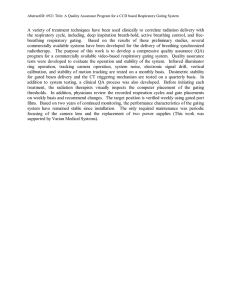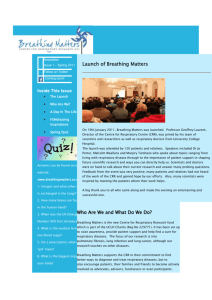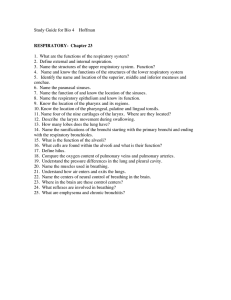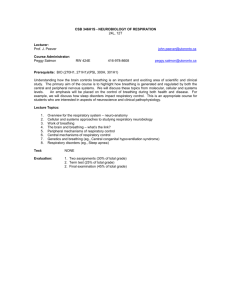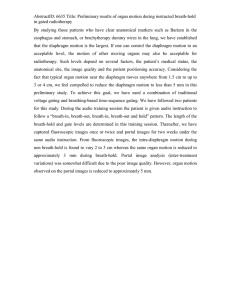AbstractID: 6988 Title: Respiratory Gated Radiation Therapy with Active Breathing Control
advertisement
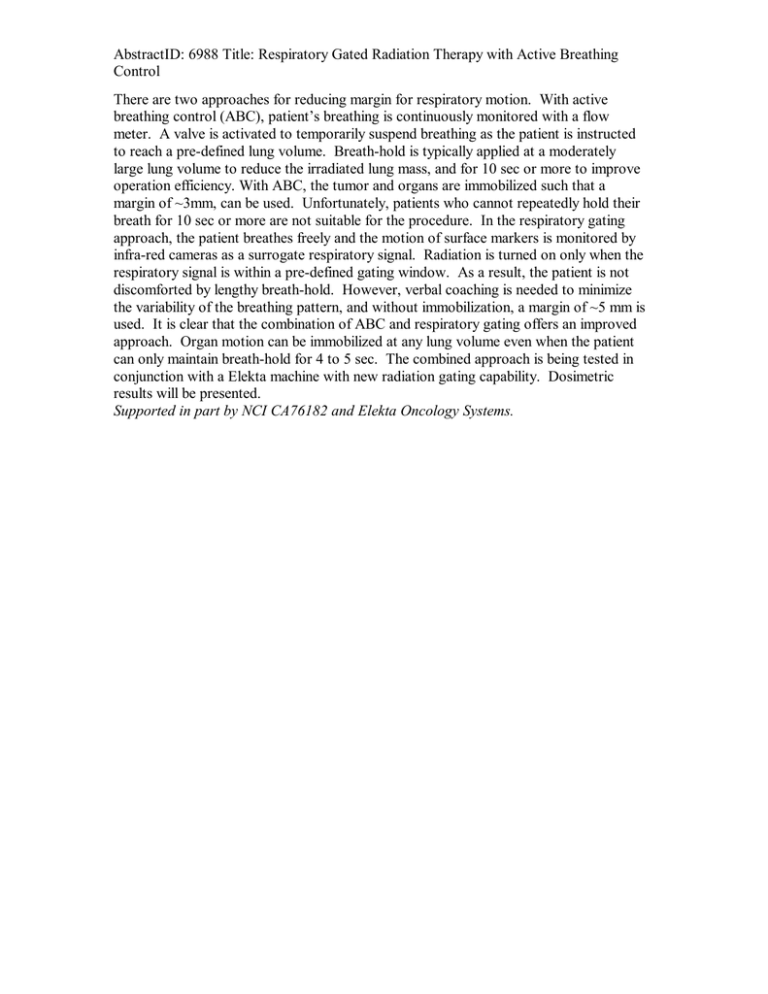
AbstractID: 6988 Title: Respiratory Gated Radiation Therapy with Active Breathing Control There are two approaches for reducing margin for respiratory motion. With active breathing control (ABC), patient’s breathing is continuously monitored with a flow meter. A valve is activated to temporarily suspend breathing as the patient is instructed to reach a pre-defined lung volume. Breath-hold is typically applied at a moderately large lung volume to reduce the irradiated lung mass, and for 10 sec or more to improve operation efficiency. With ABC, the tumor and organs are immobilized such that a margin of ~3mm, can be used. Unfortunately, patients who cannot repeatedly hold their breath for 10 sec or more are not suitable for the procedure. In the respiratory gating approach, the patient breathes freely and the motion of surface markers is monitored by infra-red cameras as a surrogate respiratory signal. Radiation is turned on only when the respiratory signal is within a pre-defined gating window. As a result, the patient is not discomforted by lengthy breath-hold. However, verbal coaching is needed to minimize the variability of the breathing pattern, and without immobilization, a margin of ~5 mm is used. It is clear that the combination of ABC and respiratory gating offers an improved approach. Organ motion can be immobilized at any lung volume even when the patient can only maintain breath-hold for 4 to 5 sec. The combined approach is being tested in conjunction with a Elekta machine with new radiation gating capability. Dosimetric results will be presented. Supported in part by NCI CA76182 and Elekta Oncology Systems.
